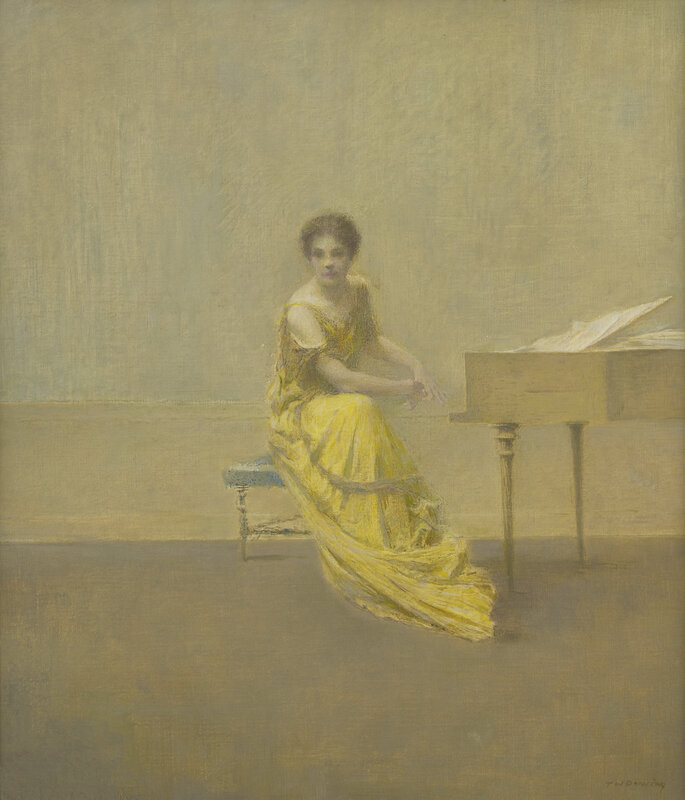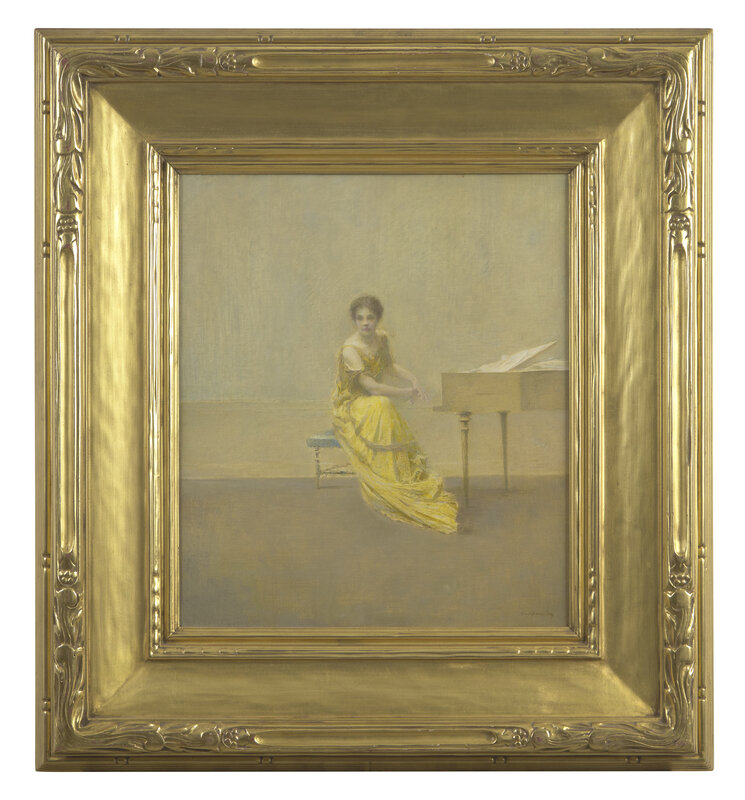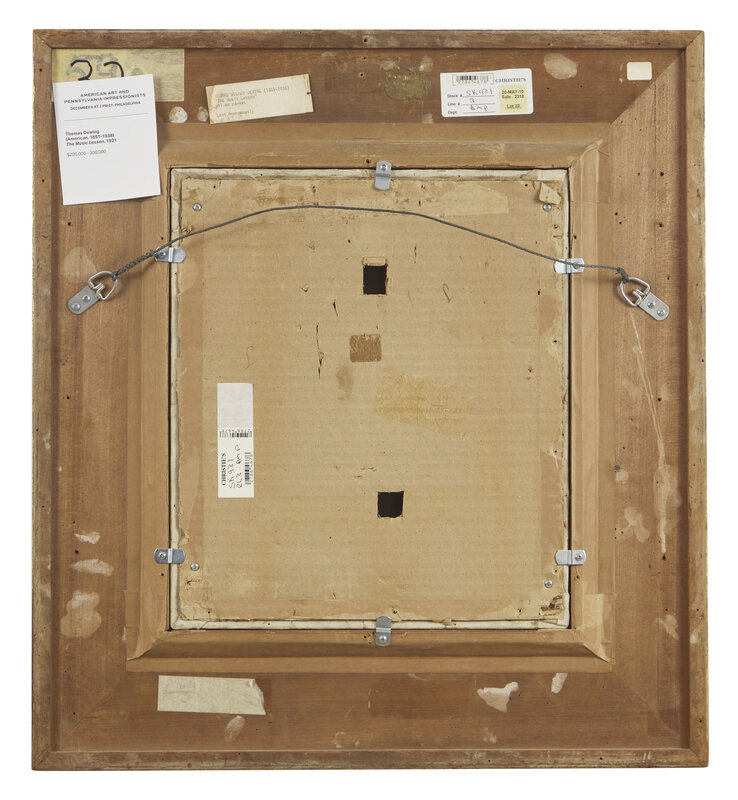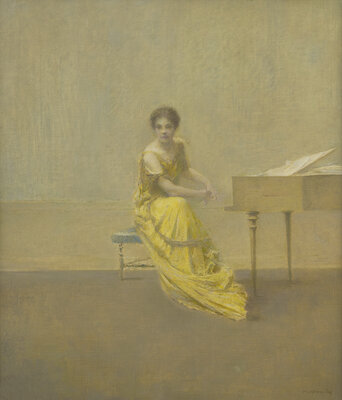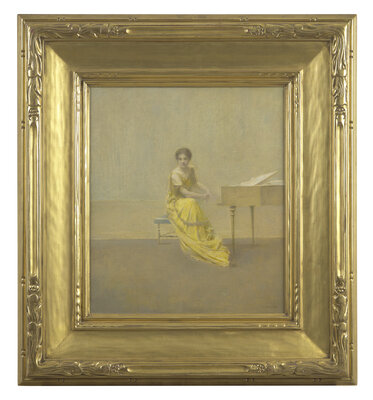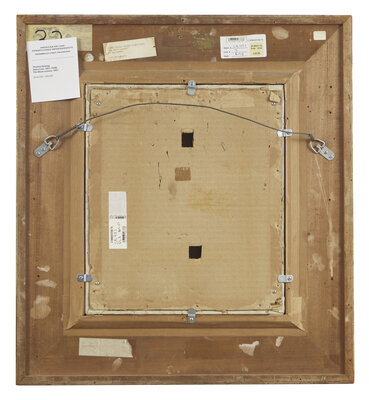Condition Report
Contact Information
Auction Specialist
Lot 21
Thomas Wilmer Dewing
(American, 1851-1938)
The Music Lesson, 1921
Sale 2105 - American Art and Pennsylvania Impressionists
Dec 8, 2024
2:00PM ET
Live / Philadelphia
Own a similar item?
Estimate
$200,000 -
300,000
Lot Description
Thomas Wilmer Dewing
(American, 1851-1938)
The Music Lesson, 1921
oil on canvas
signed TW Dewing (lower right)
16 1/8 x 14 in.
We wish to thank Alice Duncan for her help researching this artwork and assistance with the following lot essay.
Provenance:
Milch Galleries, New York, New York, 1922.
Albert R. Jones, Kansas City, Missouri, by 1922-1957.
By descent to his daughter, Virginia Mullin, Tucson, Arizona, 1957-1988.
By descent to her husband, Ralph Mullin, 1988-1995.
By descent to his grandson, Christopher Mullin, 1995-2001.
Christie's, New York, Sale of May 23, 2001, Lot 59.
Property from a Private Collection.
Exhibited:
New York, Macbeth Gallery, October 1921.
New York, Brooklyn Society of Artists, Sixth Annual Exhibition, May 2-24, (as The Lesson).
Kansas City, Kansas, Kansas City Art Museum, The Music Lesson, lent anonymously, date unknown (per label on the reverse).
Literature:
Richard Muther, History of Modern Painting, London, 1907, vol. 4, p. 317 (as At the Piano).
"New Society to Do Its Best This Year," American Art News, vol. 20 (October 15, 1921), p. 1.
Elliott Daingerfield to Albert R. Jones, January 27, 1922.
Charles Ely, "Thomas W. Dewing," Art in American and Elsewhere, vol. 10 (August 1922), pp. 225-229, illus. (as The Piano Lesson).
Christina Miller Cocroft, "Thomas Wilmer Dewing: The Man and His Art," MA thesis, George Washington University, Washington, DC, 1971, no. 118.
Susan Hobbs, The Art of Thomas Wilmer Dewing: Beauty Reconfigured, New York, 1996, p. 41.
Susan Hobbs, Thomas Wilmer Dewing, Beauty into Art: Catalogue Raisonné, Volume I, New Haven, 2018, pp. 562-563, no. 293.
Lot Essay:
The Music Lesson is a superb example of Thomas Wilmer Dewing's mature works. Stylistically, this painting shows the influence of Tonalism with its use of a subdued color palette and diffused light, evoking an atmosphere of quiet. In the present example, the elegant young woman is engaged directly with the viewer in the attitude of apt attention.
In 1922 Catherine Beach Ely wrote: "In some of his methods Dewing is a modernist, yet in his choice of models and point of view he stands alone, combining the romantic and classic tradition with up–to–date technique. In his work aristocracy of feeling and modernity are married." (C. B. Ely, “Thomas W. Dewing," Art in America and Elsewhere, August 1922, p. 229) The undefined empty room, the absence of narrative, and the narrow tonal range of the palette combine to create an atmosphere of mystery. Those more Whistlerian in his technique and tone, Dewing’s interest in the works of the master Jan Vermeer (who similarly presented women in captured moments) can be clearly seen.
Kenyon Cox, a contemporary of Thomas Dewing, wrote, "Some hundreds of years hence the historian of our time may be puzzled by Mr. Dewing's treatment of our life, and wonder if the ladies of the day usually sat in such bare rooms or wore low-cut dresses in the daytime; but what does it matter? It is a fantasy, but what a delicate one!" (Susan Hobbs, Beauty Reconfigured: The Art of Thomas Wilmer Dewing, New York, 1996, p. 31)
